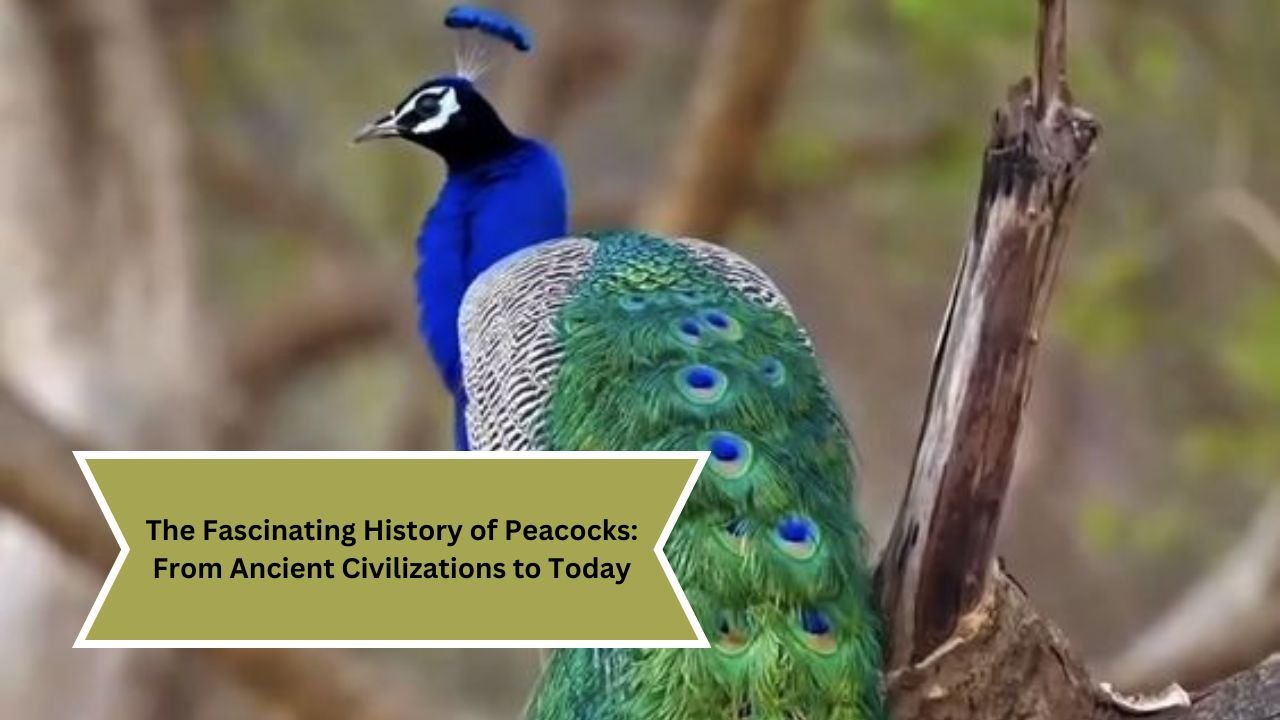Peacocks, with their vibrant plumage and extravagant tail feathers, have captivated human imagination for centuries. Their striking appearance and regal demeanor have made them symbols of beauty, grace, and immortality across various cultures. This article delves into the fascinating history of peacocks, tracing their journey from ancient civilizations to their modern-day significance.
1. Ancient Civilizations and Symbolism
1.1 Origins in South Asia
Peacocks, specifically the Indian peafowl (Pavo cristatus), are native to South Asia and have been revered in this region for thousands of years. Evidence suggests that peacocks were domesticated as early as 2000 BC in India. These magnificent birds were associated with royalty and divinity, often appearing in ancient texts, art, and mythology.
1.2 Hinduism and the Divine
In Hindu culture, the peacock is closely linked to the goddess Saraswati, the deity of knowledge, music, and the arts. Representing wisdom and beauty, the peacock is often depicted accompanying the goddess, symbolizing the pursuit of knowledge and enlightenment. Additionally, the peacock’s ability to shed and regrow its feathers is seen as a metaphor for rebirth and immortality, further embedding the bird into the spiritual fabric of ancient Indian society.
1.3 Greco-Roman Associations
In ancient Greece and Rome, peacocks were associated with several deities, particularly Hera (Juno in Roman mythology). The peacock was considered a symbol of protection, often believed to embody the all-seeing eyes of the goddess. Their beauty made them popular in decorative arts and mythology, where they represented vanity and pride, as exemplified in many ancient texts.
2. Peacocks in Art and Culture
2.1 Artistic Representations
Throughout history, peacocks have been featured prominently in art and architecture. From intricate frescoes in ancient palaces to stunning mosaics in Byzantine churches, these birds have been celebrated for their beauty. The peacock’s feathers, with their iridescent hues, have inspired countless artists, symbolizing both the ephemeral nature of beauty and the permanence of nature’s artistry.
2.2 Literature and Folklore
Peacocks have also made their mark in literature and folklore. They appear in fables and tales across cultures, often embodying lessons about pride, humility, and the consequences of vanity. The phrase “proud as a peacock” has entered everyday language, signifying someone who is overly self-satisfied or boastful. Their majestic appearance continues to inspire poets and writers, cementing their role as a cultural icon.
3. Peacocks in the Middle Ages and Renaissance
3.1 European Royalty
During the Middle Ages, peacocks became associated with European royalty. Monarchs and nobility kept peacocks in their gardens as a display of wealth and status. The bird’s rarity and beauty made it a desirable ornament, often featured in heraldry and royal insignia. The peacock’s extravagant plumage became synonymous with luxury, and its image adorned tapestries and paintings of the era.
3.2 Renaissance Symbolism
The Renaissance saw a renewed interest in classical themes, and peacocks once again captured the imagination of artists and scholars. They were often used to symbolize resurrection and eternal life due to their ability to regrow feathers. The bird appeared in paintings by renowned artists such as Sandro Botticelli and Michelangelo, highlighting its significance in art and spirituality during this transformative period.
4. Peacocks in Asia and Beyond
4.1 Cultural Significance in Asia
In many Asian cultures, peacocks continue to hold significant meaning. In China, they are seen as symbols of peace, prosperity, and good fortune. The peacock’s association with beauty and grace makes it a common motif in traditional art and festivals, where it often represents the harmony of nature.
4.2 Peafowl in the Middle East
In the Middle East, peacocks are featured in ancient texts and folklore, often associated with wealth and beauty. The birds have been depicted in Persian art, symbolizing paradise and the joy of life. Their vibrant colors and intricate patterns have inspired craftsmen to create stunning mosaics and textiles.
5. Modern-Day Peacocks
5.1 Conservation and Breeding
Today, peacocks are still celebrated for their beauty, but they also face challenges due to habitat loss and poaching. Conservation efforts are underway to protect their natural habitats and ensure their survival. Many countries have established reserves and breeding programs to maintain healthy populations of these magnificent birds.
5.2 Peacocks in Popular Culture
In contemporary culture, peacocks remain symbols of beauty and elegance. They appear in fashion, interior design, and even social media, where their striking visuals capture the attention of millions. Events like fashion shows often feature peacock-inspired designs, celebrating the bird’s timeless allure.
5.3 Symbol of Diversity and Inclusion
Peacocks have also become symbols of diversity and inclusion. Their colorful plumage serves as a reminder of the beauty of individuality, encouraging acceptance and celebration of differences. Various organizations and movements have adopted the peacock as an emblem of pride, particularly within the LGBTQ+ community.
6. Conclusion
The history of peacocks is a rich tapestry woven through ancient civilizations, art, culture, and modern society. From their revered status in Hindu mythology to their symbolic representation of beauty and pride in various cultures, peacocks have transcended time and geography. As we continue to admire these majestic birds, it is essential to recognize their ecological importance and the need for conservation efforts to ensure their survival for future generations.
In a world that often seems mundane, the peacock stands out as a beacon of beauty and grace, reminding us of the wonders of nature and the stories that intertwine with the lives of these remarkable birds. Whether seen in the wild, at a zoo, or in art, the fascination with peacocks endures, celebrating their unique place in human history and culture.
| HOME | CLICK HERE |
| PEACOCK | CLICK HERE |

